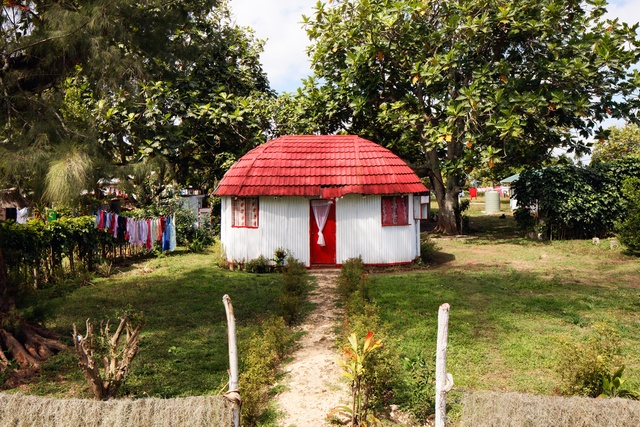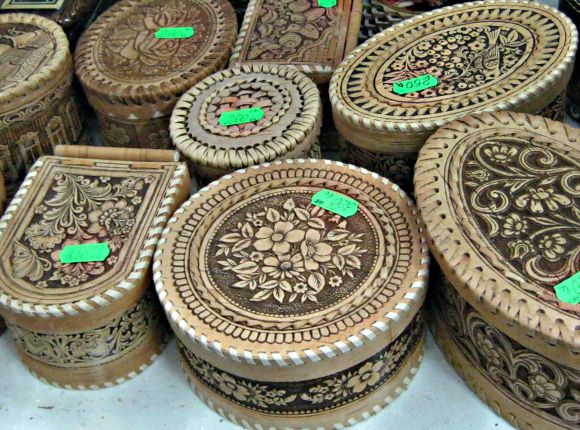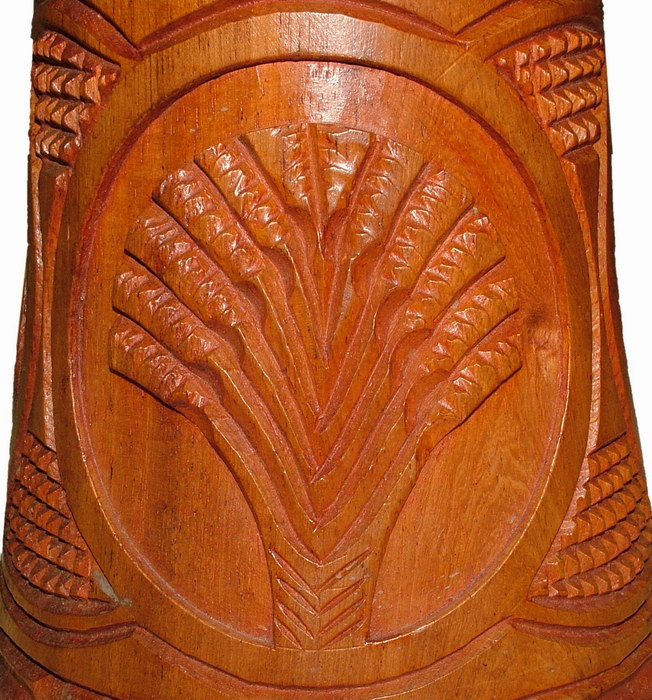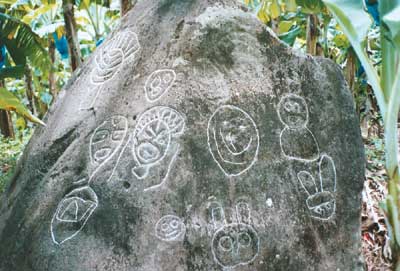Hands
down, Ivoirians are known for their woodcarving skills. And if there is one
thing they are most known for would be masks. Masks, in and of itself, are not
something new or unique to Africa in general. But each tribe or group of people
that create them puts their own cultural touch to it. Masks serve a variety of purposes and are created in a
variety of styles as well: some
symbolize deities, some represent deceased individuals, and other are created
in the likeness are animals. Ivoirians
believe that these masks have their own soul, and when you put the mask on, the
soul of the mask enters the wearer’s body. This is why only certain people can wear certain masks. And in fact, not just anybody can even
own a mask.
But
in modern times, masks aren’t merely the only things that Ivoirian artists do. Today, artists have expanded their
field to include all types of art, including photography, sculpting, textile
arts, and painting.
One
of the most famous photographers in Côte d’Ivoire is Ananias Leki Dago. He’s
won several awards for his work over the past decade.
Another
artist who has won several awards for his work is sculptor Christian
Lattier. Many of his pieces are in
a special collection held at the Musée National de Ivory Coast in Abidjan.
Ouattara
Watts is a painter whose works are renowned the world over as a
neo-expressionism artist. The thing that makes his art interesting is the use
of recycled materials in his art.

The
earliest forms of literature, as with most other areas of Africa, come from the
oral storytelling traditions. Each
tribe or ethnic group of people certainly has their own stories told in their
own languages. And while
colonialism generally led to a lot of changes in Africa that wasn’t always
welcome or warranted, there were some things that came as a result of it that
wasn’t so bad. Ivoirian literature
as we know it is written in French, a “second” language for most
Ivoirians. And yet, at the same
time, because many of these countries have 60 or 70 different indigenous
languages, French acted as a lingua franca among the people. And by writing in French, a lesser
impact more or less set up literature from Côte d’Ivoire to be mainly read in
the European market first and the African Francosphere market second.
The
subject matter certainly varies from writer to writer and from decade to
decade. On one hand, there are traditional stories that have been chronicled,
and on another hand, there is the political and socio-economical sentiments. Ivoirian literature also ranges in
genres including poetry, short stories, plays, and novels.

Born
in Abidjan, Marguerite Abouet later moved to the suburbs of Paris. Although she tried to write novels at
first, she really made her name as a graphic novelist. Although her first graphic novel, Aya, depicted life in Côte d’Ivoire, and
it was often speculated that it was semi-autobiographical, but she insisted
that it wasn’t. She collaborated
with her artist husband who did the illustrations. It was rather successful
both in France and abroad, and there are others that followed the first one. It’s
available through Amazon.com – I read a little of a preview they have. I might
try to buy it one of these days. My library actually had a different book
called Akissi that I’m requesting.
Also
born in Abidjan, Bernard Binlin Dadié was a novelist, playwright, poet, and
politician, holding the position of Minister of Culture for nine years during
the 1960s and 1970s. Influenced by
his experiences when the country was still under French control, one of his
first major works was taking traditional stories and folktales and then
comparing and connecting them to the modern world. He is also known for his widely-read poem “I Thank You God.”
Ahmedou
Kourouma studied in various countries in his youth, only to return to Côte
d’Ivoire just after its independence. Because he questioned and generally
opposed the new leadership of the country, he was subsequently exiled for the
next 30 years, dividing this time between Algeria, Cameroon, and Togo before
eventually coming back home. The first novel he wrote (Le soleils des indépendances) was highly critical of the
government, which almost always places the writer in difficult situations. Even in the wake of the 2002 civil war,
his outcries threatened his safety once again. Although he’s written several
novels, he’s more well known in the French-speaking world than in the
English-speaking one.

Véronique
Tadjo often considers herself as pan-African since she has spent a lot of time
all over Africa. One of her parents was Ivoirian and the other was French,
which helped contribute to her love of travel, learning, and the academic life.
She eventually got her bachelor’s degree and doctorate, spending time teaching
English and French at the college level. She also travels giving workshops and
seminars in writing and literature, especially children’s literature. She’s won
several awards for her books – the book Mamy
Wata and the Monster was chosen as one of Africa’s Best 100 Books of the 20th
Century, making it only one of four children’s books to be included.
Up
next: music and dance



.jpg)

































